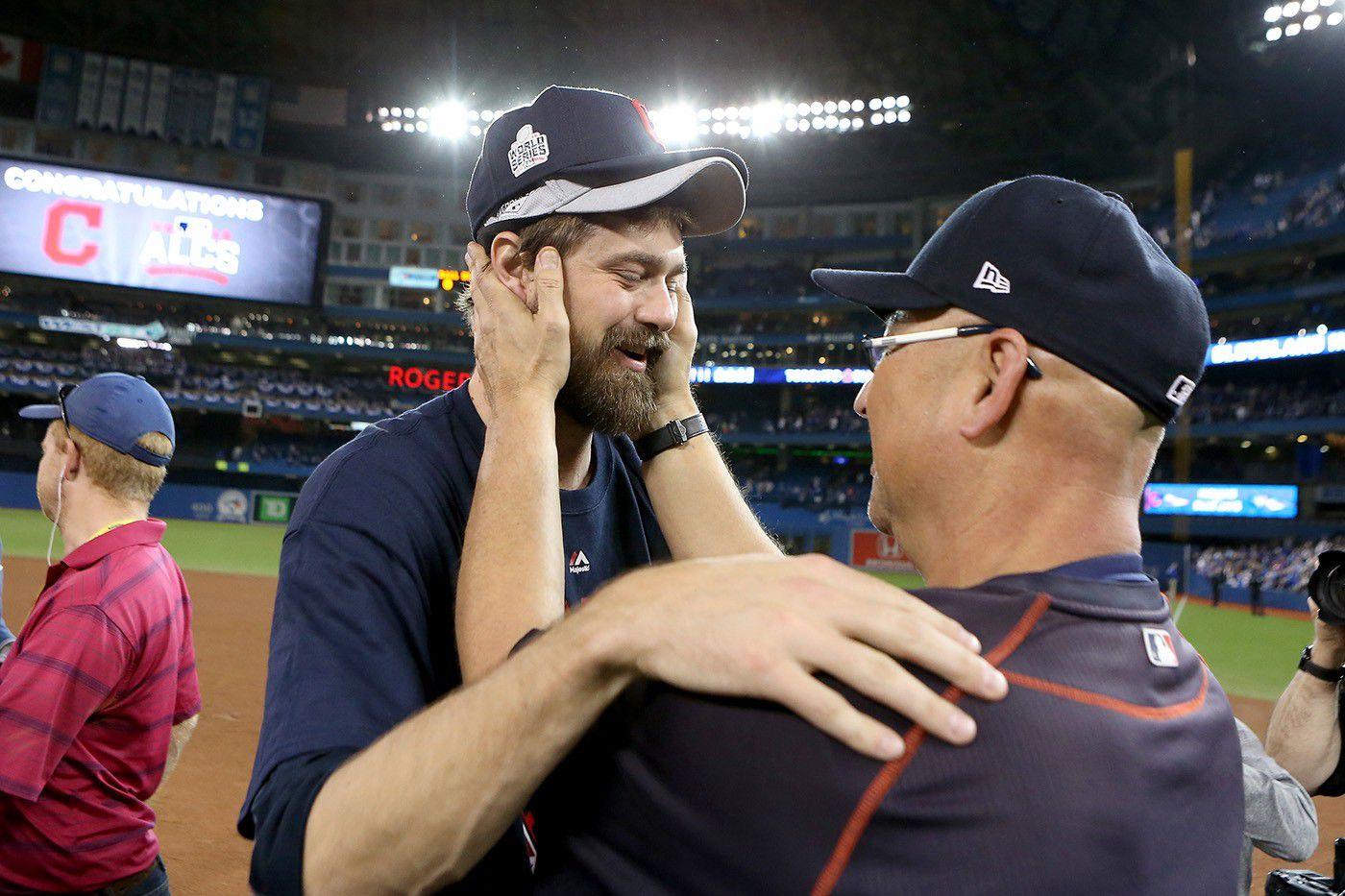With a rotation of one trustworthy starting pitcher, a fringy innings eater, the Biblical Curse of Blood, and a child, the Cleveland Indians are through to the World Series with a 4–1 series win over the Toronto Blue Jays. It would feel more like an underdog story if they hadn’t looked so implacable along the way — seldom has a three-run lead against one of the best offenses in baseball felt so much like 10.
So as Toronto’s season comes to a close in the ALCS for the second straight year, you might ask: What could the Blue Jays have done differently? Where’s the massive weakness that cost Toronto the pennant? What damning tactical error did manager John Gibbons make?
I can’t find one. “Hit better?” Although it feels a little churlish to say that about a team that had the highest OPS in the playoffs entering Game Five. Josh Donaldson hit .416 in the playoffs, and Edwin Encarnación hit three home runs, even as both grounded into double plays in Game 5. Offense comes and goes, as the Cubs are finding out over in the National League, and even great offensive teams are going to go through stretches where they score eight runs in five games.
Pitch better, then? Maybe the Blue Jays missed the True Ace quality that David Price gave them last year — Price’s spotty playoff history notwithstanding. Well, Marco Estrada was outstanding this postseason: three starts, 22.1 IP, 19 strikeouts against one walk, a 2.01 ERA, and an opponent batting average of .195. J.A. Happ pitched well in his Game 2 loss, and Aaron Sanchez’s six innings of two-hit ball in Game 4 were equal to Estrada’s Game 1 performance at the very least. Even the lone hiccup in Toronto’s rotation this time around, Marcus Stroman’s four-run performance in Game 3, is hardly bad enough to guarantee a loss under normal circumstances.
As a team, the Blue Jays pitched extremely well. Toronto’s 2.59 ERA and .172 opponent batting average in the playoffs were the second-best totals coming into today. And for all the talk about Cleveland’s bullpen in this series, Toronto’s bullpen didn’t allow a single run in the ALCS. Not a single run, and only five hits in 12.2 innings. I don’t know how you improve on that.
And unlike the NLCS, which has been managed within an inch of its life, I’m not sure what Gibbons could’ve done differently in high-leverage situations — if only because nobody ever scored, from either team, in those crucial situations.

But while Toronto played well enough to win for the most part, two factors turned the series. The first has to do with advance scouting, which allowed Cleveland to skate by in Games 2 and 5 with starting pitchers that, if not for an injury crisis, they probably would’ve left home this October. Josh Tomlin has a seven-year big league track record of, particularly in recent years, relying on his cutter. In 2016, Tomlin threw 39.5 percent cutters and 16.2 percent curveballs, but in Game 2 he threw it more often than he ever had before, 36 times out of 85 total pitches, against only 19 cutters. Toronto went into Game 2 expecting Tomlin, who walked fewer batters than anyone in baseball this year, to pound the zone. Instead, the Blue Jays faced a completely different pitcher, one who used the low curveball to induce one frustrating grounder after another.
While Tomlin threw the book away against Toronto, 24-year-old Ryan Merritt never had one written on him. Merritt had started one big league game in his life before being named the Game 5 starter just two days ago. He pitched the game of his life: Merritt threw 4.1 shutout innings while challenging the righty-heavy Toronto lineup inside with a high-80s fastball (not that he has anything better to challenge hitters with). And after Merritt faced only 14 batters, Cleveland manager Terry Francona yanked the rookie before Toronto’s hitters could adjust.
That’s the second thing Toronto couldn’t counter: Francona’s game-changing use of his bullpen, particularly Andrew Miller. When organized baseball first took shape 150 years ago, the pitcher stayed in until the game was over or he was abducted by stagecoach bandits. And even as relief-pitcher use has exploded in recent years, that basic assumption has remained the game’s tactical bedrock: The game is managed front to back, and the starting pitcher goes at least five innings, and then as much further as he can without tiring. Even as midrotation starters have gone to a twice-through-the-order-and-out routine in recent postseasons, the mentality has always been that the starting pitcher is the game’s foundation and the bullpen is a supplement.
In this series, Francona reversed that mentality for the first time in baseball history. Unless Corey Kluber started the game, Francona aimed to get as many innings as possible out of Miller and Cody Allen; every pitcher before that — up to and including the starter — was a necessary evil. Although Gibbons got out-managed by that standard, I’m not sure he could have been expected to anticipate a sea change in baseball tactics that could be as revolutionary as the invention of the pincer movement or gunpowder. Even if he had, any countermove still involves scoring runs off Miller and Allen, which … well, good luck.
With Edwin Encarnación, Michael Saunders, and José Bautista all bound for free agency, Toronto’s got some hard choices ahead this offseason. GM Ross Atkins and his brain trust will no doubt try to rectify the weaknesses that brought the team down against Cleveland. I’m just not sure they’ll find any.